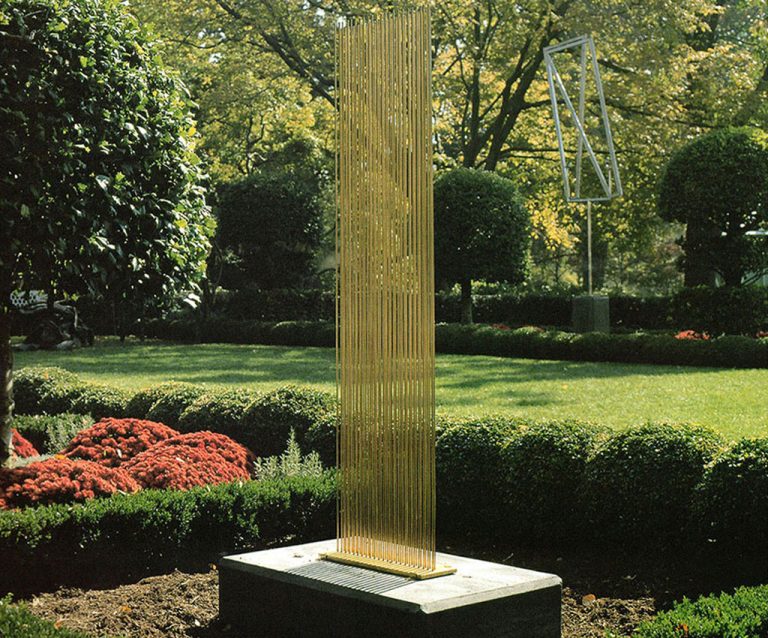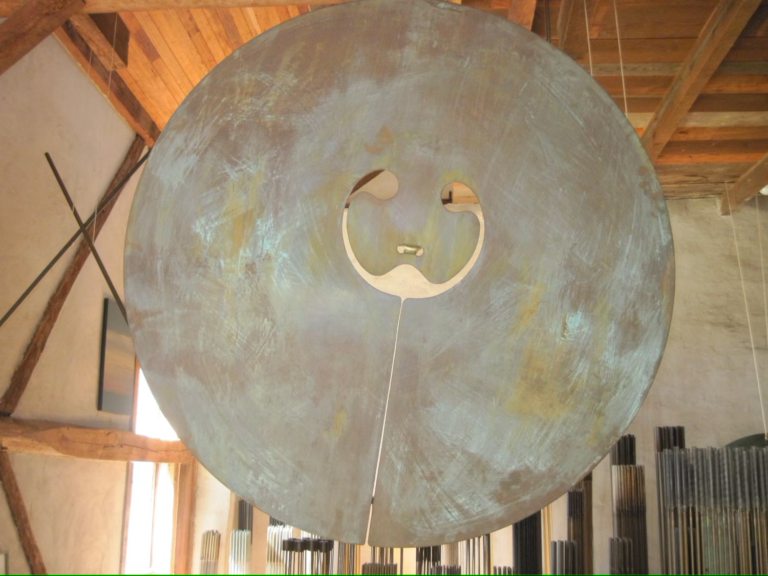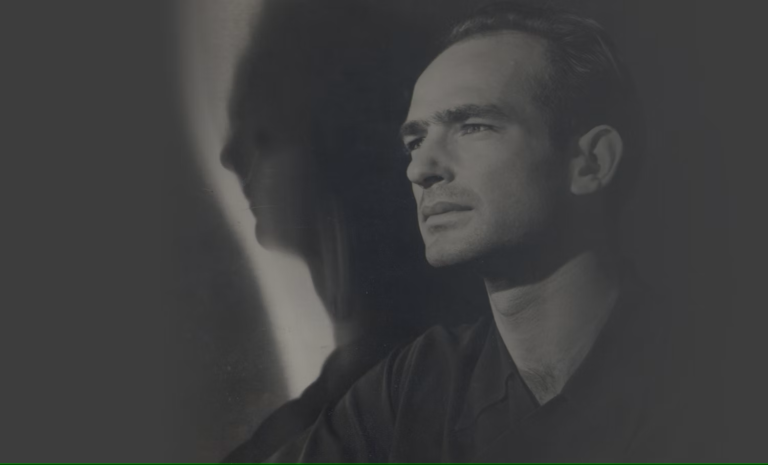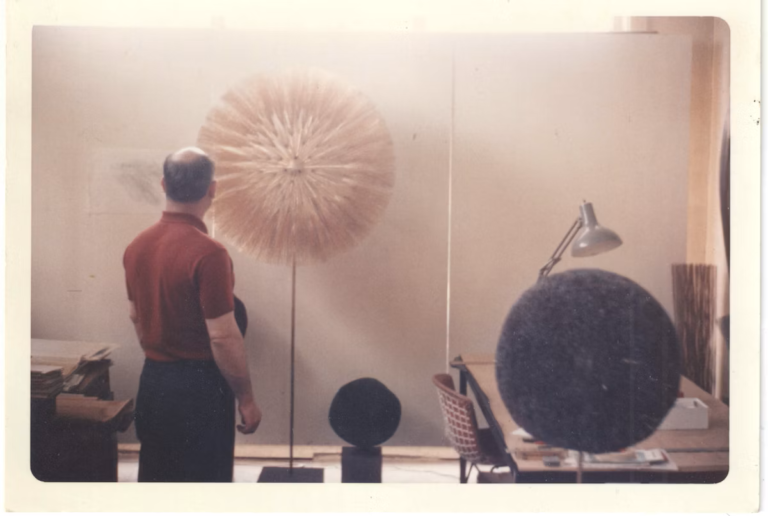“In His Own Words” Part III
An iconic American success story, artist Harry Bertoia, sat down with interviewer Paul Cummings in the Sonambient Barn during the summer of 1972 for the Oral History Interview project of the Smithsonian Archives of American Art. A selection of excerpts follows.
To read the first “In His Own Words” special, click here. To read Part II click here.
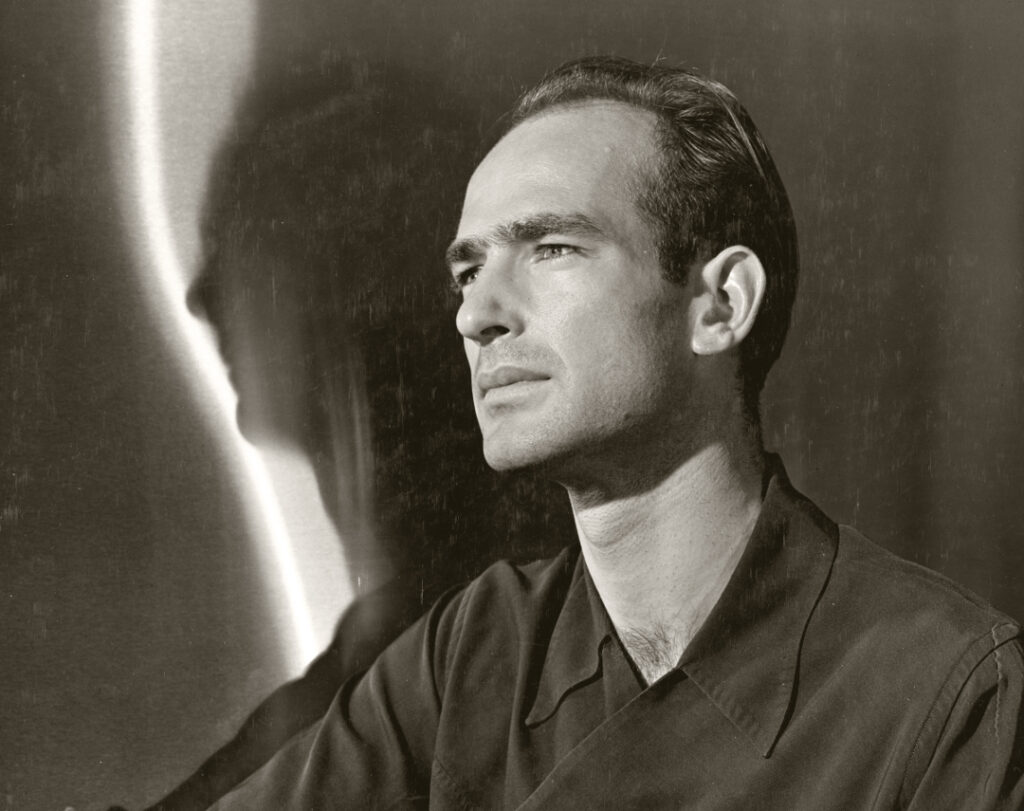
Paul Cummings: What kind of things were you making in those days at Cranbrook?
Harry Bertoia: At that time, one thing (which is still with me) is a kind of drawing which I began to do in the print shop. By the way, going back to the woodcuts, you know the woodcut sort of tired me out too because once a piece of wood was carved in such a way the impression would more or less turn out the same, depending on the ink and the pressure, but the image was really the same and I didn’t like it so much. So I began to cut the wood in smaller pieces and began to relate the blocks in various ways and this opened up a more flexible—
Paul Cummings: You mean you’d take a wood panel, after you’d carved on it and then cut it up into sections?
Harry Bertoia: Well, this is what happened, but I didn’t use that carved side I used the plain side. And when this happened, you know I actually went and found pieces of wood that would be suitable for cutting such ways without any carved line at all, and simply used a block as a way of depositing color.
Paul Cummings: So you get the grain and—
Harry Bertoia: I was not too much interested in the grain but I was interested in the other dimension, that if you press a block of wood with a certain amount of ink you get a certain intensity and you press it again without re-inking, you get a faded image and if you keep going you get one which is barely visible.

Well, that’s one way, but also what was of more value to me was the fact that I could take one block in relation to another block and in this case they would have such relation to each other, in another case they would change, this flexibility kept me interested and I worked with it for quite a while.

But in turn this seemed to have led on to another type of drawing where the ink, the printer’s inks were made on a flat surface and then a piece of paper would be deposited over gently and the drawing began to take shape from the back.
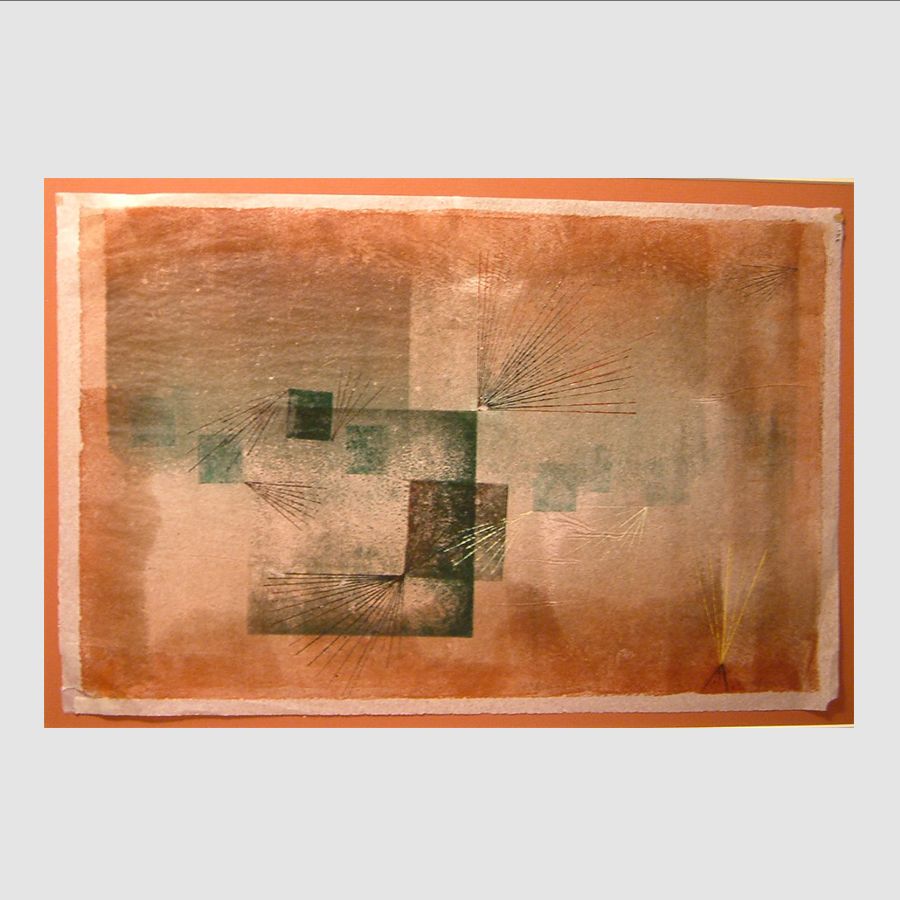
I drew not with a pencil but with a pointed piece of wood or any other shape of wood, and my hand — thumb and palm — and this became a very intimate way of making a drawing because it offered exactly the quality, it offered the setting required. Which means I would not clearly see what I was doing since the back of the paper had sufficient substance to not reveal the amount of ink that it was picking up by pressure.
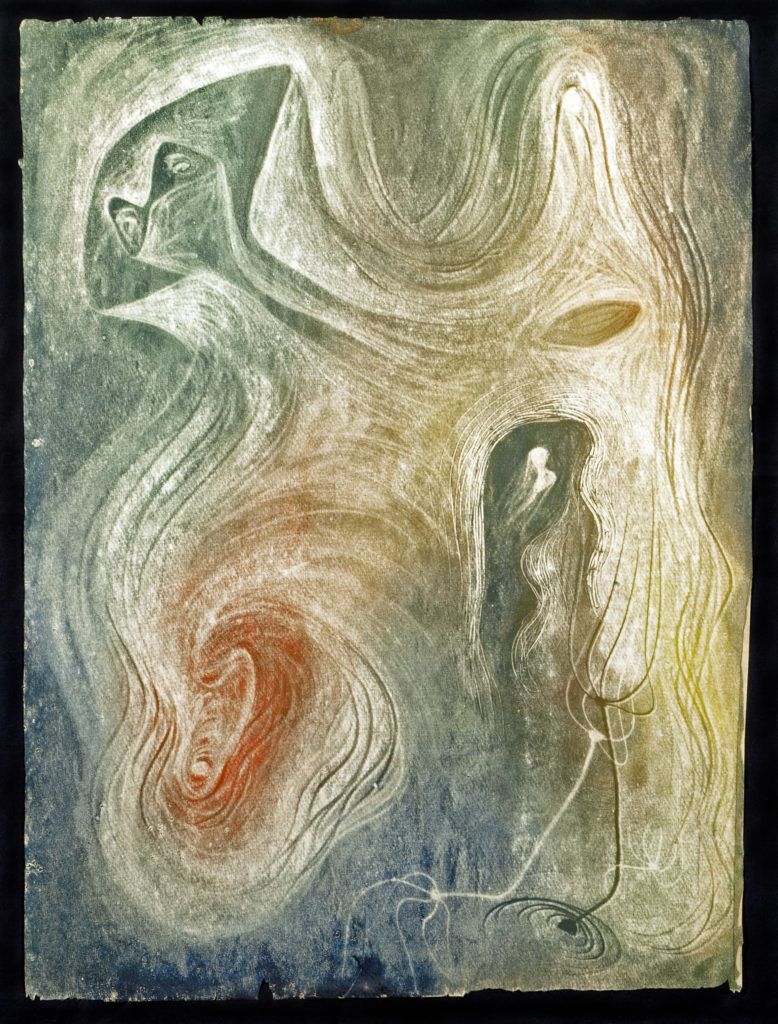
So not seeing what I was doing gave me encouragement and then the other factor was that it was relatively quick. I understand in lithography it has to go through a considerable amount of work preparing the stone and so forth, well, I wanted to bypass all of that because it didn’t make much sense to me.
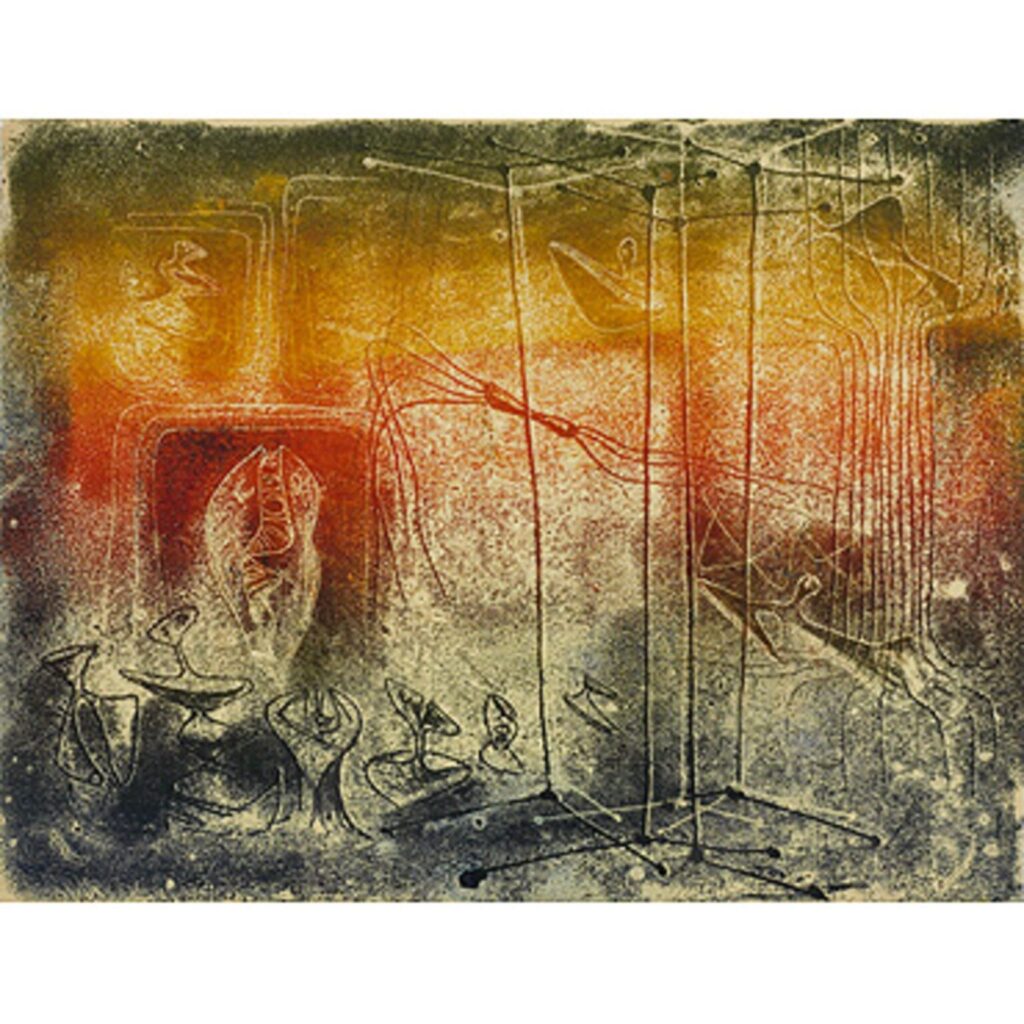
Paul Cummings: It’s like a monotype really, isn’t it?
Harry Bertoia: Yes, it’s like a monotype that’s done in reverse, it’s done from the back of the paper but it’s equally as spontaneous and direct.

Paul Cummings: Were these figurative images or abstract or what?
Harry Bertoia: That was the beginning of probably what further development came from. For one thing it was not abstract, although it may have appeared so to others. To me it had a very definite relation to the whole world as I began to make an image of it.
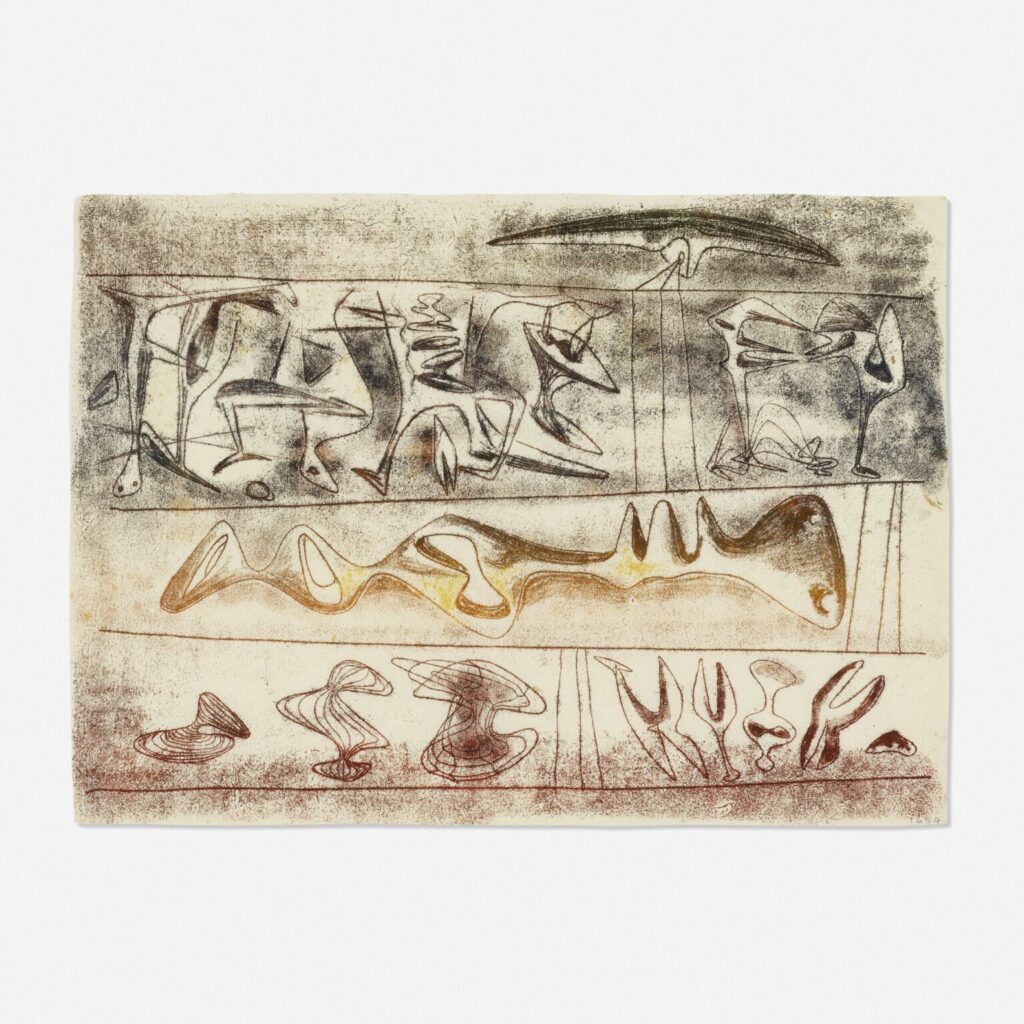
If my mind would think in terms of cosmic relationships, such as planetary systems and galaxies, and so this of course — not you know, I have not seen those, but I have to somehow imagine something along that line.
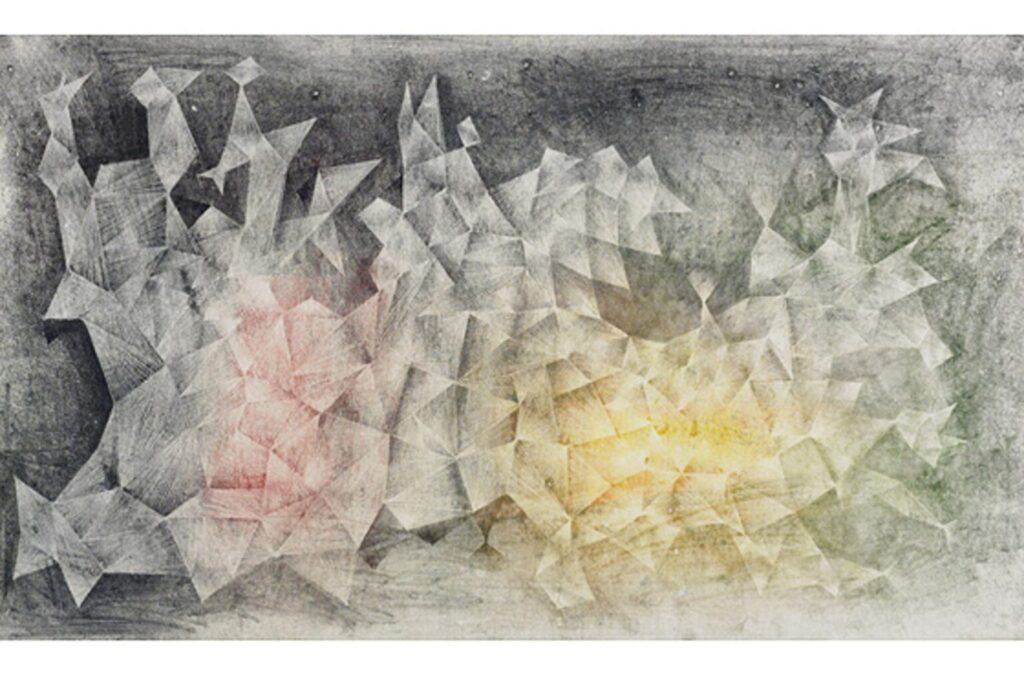
Well, the drawings served either as a point of departure or the reverse, I don’t quite know, it’s not really up to me, it could be that these drawings began to generate their own life and they keep going and I’m still doing that.
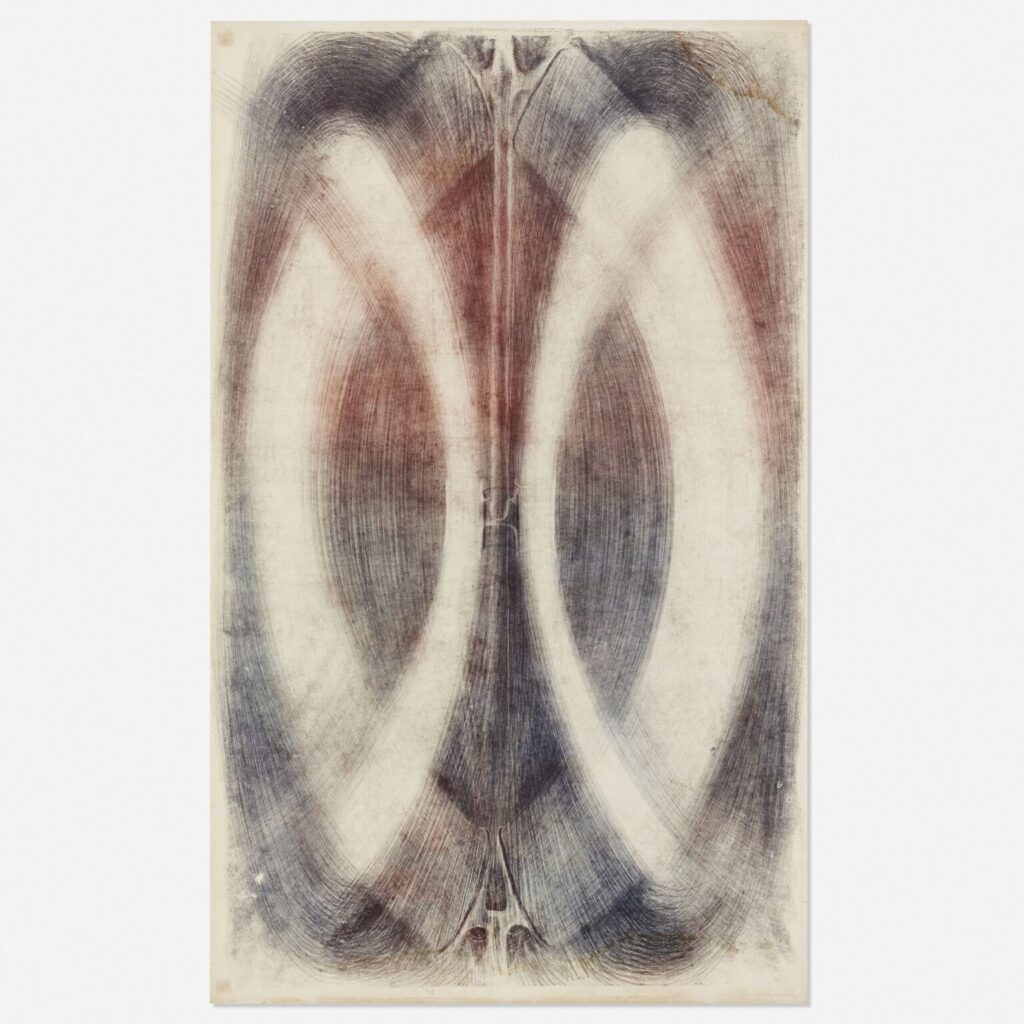
So by now I have a pretty good collection which amounts to almost a sort of notebook of what is registered as I go along in life.
To read the first “In His Own Words” special, click here. To read Part II click here.
Filmed in 1971 in the Sonambient Barn of Pennsylvania, this is a limited edition set (of 500) of a documentary of spectacular footage of Harry Bertoia playing and discussing the Sonambient collection. Anyone who owns a Sonambient sculpture will want to complement their piece with this snippet of history. Released to the public for the first time in over forty years with never-before-heard interview recordings of Harry speaking about Sonambient. Find out more and purchase your collectors edition today: harrybertoia.org/shop



